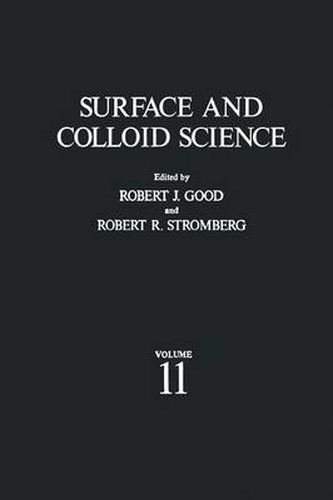Readings Newsletter
Become a Readings Member to make your shopping experience even easier.
Sign in or sign up for free!
You’re not far away from qualifying for FREE standard shipping within Australia
You’ve qualified for FREE standard shipping within Australia
The cart is loading…






This title is printed to order. This book may have been self-published. If so, we cannot guarantee the quality of the content. In the main most books will have gone through the editing process however some may not. We therefore suggest that you be aware of this before ordering this book. If in doubt check either the author or publisher’s details as we are unable to accept any returns unless they are faulty. Please contact us if you have any questions.
Surface science and colloid science are preeminently experimental subjects. They constitute complementary aspects of a field which has been notably active since World War II; there is every reason to expect that the level of activity will continue to rise in the coming decades, so it is timely to review certain experimental methods of surface and colloid science as they exist, and to evaluate and refine those methods. This volume, and others that will follow, are principally concerned with experimental methods. The working scientist needs access to the latest techniques, of course. He also needs to learn of the potentialities of recently developed techniques which he may not have been aware of. Equally important, or perhaps even more so, he needs to learn of the pitfalls of existing methods. One might say, wistfully, that it would be nice to be able to pick up somebody’s description of a new piece of apparatus, to go into the laboratory, to build it, and to have it work, the first time! There is, however, a serious problem of the interaction between the experiment per se and the theory for which the experiment is designed. Very often, this interaction renders problematic the interpretation of direct observations. An example, from experience of the senior editor of this volume, is the question of contact angle hysteresis. (See Chapters 1 and 2.
$9.00 standard shipping within Australia
FREE standard shipping within Australia for orders over $100.00
Express & International shipping calculated at checkout
This title is printed to order. This book may have been self-published. If so, we cannot guarantee the quality of the content. In the main most books will have gone through the editing process however some may not. We therefore suggest that you be aware of this before ordering this book. If in doubt check either the author or publisher’s details as we are unable to accept any returns unless they are faulty. Please contact us if you have any questions.
Surface science and colloid science are preeminently experimental subjects. They constitute complementary aspects of a field which has been notably active since World War II; there is every reason to expect that the level of activity will continue to rise in the coming decades, so it is timely to review certain experimental methods of surface and colloid science as they exist, and to evaluate and refine those methods. This volume, and others that will follow, are principally concerned with experimental methods. The working scientist needs access to the latest techniques, of course. He also needs to learn of the potentialities of recently developed techniques which he may not have been aware of. Equally important, or perhaps even more so, he needs to learn of the pitfalls of existing methods. One might say, wistfully, that it would be nice to be able to pick up somebody’s description of a new piece of apparatus, to go into the laboratory, to build it, and to have it work, the first time! There is, however, a serious problem of the interaction between the experiment per se and the theory for which the experiment is designed. Very often, this interaction renders problematic the interpretation of direct observations. An example, from experience of the senior editor of this volume, is the question of contact angle hysteresis. (See Chapters 1 and 2.